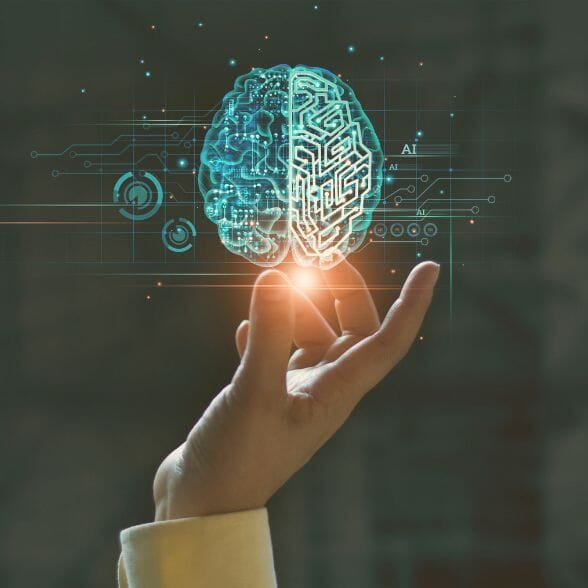Digitalization
Digitalization
Transforming the World into Bits and Bytes
In the modern era, we find ourselves surrounded by an ever-expanding digital landscape. From our smartphones and laptops to the vast expanse of the internet, our lives are increasingly intertwined with digital technology. At the heart of this technological revolution lies the concept of digitization, a process that has fundamentally transformed the way we create, store, and consume information.
So, what exactly is digitization? Put simply, digitization refers to the conversion of analog information into digital format. It involves encoding various forms of data, such as text, images, audio, and video, into a series of binary digits, commonly known as bits. These bits are represented by the numbers 0 and 1, forming the foundation of all digital information.
The process of digitization begins with the use of specialized hardware, such as scanners or cameras, to capture analog content and convert it into a digital representation. Once digitized, the data can be stored, manipulated, and transmitted using digital technology. This transformative process has had a profound impact on numerous aspects of our lives, revolutionizing industries, communication, and access to information.a
One of the most significant advantages of digitization is the ability to store vast amounts of data in a relatively small physical space. Gone are the days of overflowing filing cabinets and shelves filled with books. With digitization, entire libraries can now fit into pocket-sized devices, granting unprecedented access to information. This has democratized knowledge, empowering individuals around the globe to easily explore and educate themselves on a wide range of subjects.
Moreover, digitization has spurred the creation of new forms of media and entertainment. The music industry, for instance, has witnessed a radical shift from vinyl records and cassettes to digital downloads and streaming services. The film and television industries have also embraced digital formats, enabling the production, distribution, and consumption of content in ways never before imagined.
In addition to transforming information storage and media consumption, digitization has brought about tremendous advancements in sectors such as healthcare, finance, and manufacturing. Electronic medical records have revolutionized patient care, improving efficiency, accuracy, and accessibility of medical information. Digital banking and e-commerce have reshaped the way we manage our finances and make purchases. Industrial automation and the Internet of Things (IoT) have streamlined manufacturing processes, increasing productivity and enhancing product quality
However, digitization also raises concerns and challenges. The rapid proliferation of digital data has led to issues of data privacy, security, and ownership. The digitization of jobs has created disruptions in the labor market, with certain tasks being automated, potentially leading to job displacement. Ensuring equitable access to digital resources and bridging the digital divide remains a significant challenge in many parts of the world.
As we move forward in this digital age, the concept of digitization will continue to evolve. Emerging technologies like artificial intelligence, virtual reality, and blockchain are pushing the boundaries of what is possible and opening up new realms of digital innovation. It is essential for individuals, businesses, and societies to adapt and navigate the opportunities and challenges that arise from this ongoing digital transformation.
In conclusion, digitization has revolutionized the world by converting analog information into digital format. It has transformed the way we store, create, and consume data, impacting industries, communication, and access to information. While bringing numerous advantages, digitization also poses challenges that must be addressed to ensure a sustainable and inclusive digital future. As we embrace the digital revolution, understanding the power and implications of digitization is crucial for navigating the increasingly digitized world we live in.
The process of digitizing analog information involves several steps to convert it into a digital format. Here's a general overview of how an analog process is digitized:
Understanding Customer Needs
Understanding Customer Needs
3. Quantization
3. Quantization
5. Storage and Transmission
5. Storage and Transmission
Digitalization in a nutshell
2. Sampling
2. Sampling
4. Encoding
4. Encoding
It's important to note that the quality and accuracy of the digitized content depend on factors like the resolution of the sampling and quantization, as well as the limitations of the capturing hardware and software used. The digitization process aims to faithfully represent the analog information in a digital form, but there may be some loss of detail or fidelity during the conversion.
Overall, the process of digitizing analog content involves capturing, sampling, quantizing, encoding, and storing or transmitting the data in a digital format, enabling it to be manipulated, shared, and accessed using digital systems and technology.
In today's fast-paced and interconnected world, businesses across industries are embracing digital transformation to stay competitive and meet the evolving needs of their customers. As an international team of IT specialists, we embark on an exciting journey of guiding our customers through the process of digitization, helping them unlock new opportunities and drive innovation. Let's delve into our approach and how we proceed with the journey of digitization.
Understanding Customer Needs
Understanding Customer Needs
At the core of our process lies a deep understanding of our customers' requirements and goals. We engage in comprehensive discussions and consultations to gain insights into their business operations, challenges, and aspirations. By actively listening to their needs, we develop a clear understanding of how digitization can add value to their organizations.
Assessing Current State
Assessing Current State
Next, we conduct a thorough assessment of our customers' existing systems, processes, and infrastructure. This evaluation helps us identify areas that can benefit from digitization and determine the readiness of their organization for the transformation. We consider factors such as data management, technological capabilities, and scalability to craft a tailored digitization strategy.
Collaborative Strategy Development
Collaborative Strategy Development
Our international team collaborates closely with the customer to design a comprehensive digitization strategy. This strategy encompasses the specific goals, timelines, and key performance indicators that will guide the transformation journey. We emphasize the importance of aligning the digital strategy with the overall business objectives of the customer, ensuring a coherent and impactful approach.
Solution Architecture
Solution Architecture
Based on the defined strategy, our team works on creating an optimal solution architecture. We leverage our expertise in various technologies, such as cloud computing, data analytics, artificial intelligence, and Internet of Things (IoT), to design robust and scalable solutions tailored to the customer's unique requirements. The architecture takes into account factors like data security, interoperability, and future scalability.
Agile Implementation
Agile Implementation
With the strategy and architecture in place, we proceed with an agile implementation methodology. We break down the digitization journey into manageable phases, enabling incremental progress and flexibility. Our team collaborates with the customer's stakeholders, ensuring transparent communication, and addressing any challenges that may arise during implementation. Regular checkpoints and feedback loops are established to refine the solution and ensure alignment with evolving customer needs.
Seamless Integration
Seamless Integration
Digitization often involves integrating new digital systems and processes with existing ones. Our team focuses on achieving seamless integration by carefully orchestrating the interfaces, data flows, and dependencies between different components.
We ensure that the digitized solutions harmoniously coexist with the customer's legacy systems, maximizing the value of their existing investments while introducing modern capabilities.
Change Management and Training
Change Management and Training
A successful digitization journey involves empowering the customer's workforce with the necessary skills and knowledge to embrace the digital changes. We collaborate with the customer to develop change management strategies and deliver targeted training programs.
This ensures smooth adoption of the digitized solutions and helps employees realize the benefits of the transformation.
Continuous Improvement and Support
Continuous Improvement and Support
Digitization is an ongoing process that requires continuous improvement and support. Our international team remains committed to providing post-implementation assistance, monitoring the performance of the digitized systems, and addressing any issues promptly. We collaborate with the customer to identify further opportunities for optimization, innovation, and expansion as they continue to evolve in the digital landscape.
Our Digitalization approach in a nutshell
By following this comprehensive approach, our international team of IT specialists strives to enable successful digitization journeys for our customers. We bring together our diverse expertise, cross-cultural understanding, and cutting-edge technologies to guide organizations through the transformative process.
Together with our customers, we embrace the potential of digitization, unlocking new horizons of growth and innovation in the digital era.
Contact us!
Rest assured, your data is safe with us. We respect your privacy and will only use your information to communicate with you about your inquiry or project. Your trust is important to us, and we're committed to delivering exceptional service while safeguarding your information.

Data Lakes & DWH
Creating and managing Data Lakes, Lakehouses, and Data Warehouses, we centralize your data, ensuring a unified, accurate source for all business insights and analytics.

Data Transport
Ensuring secure data management, we handle storage, transport, and transformation, preparing your data for accurate, insightful analytics to drive informed decisions.

Data Transformation
Our data management services include transforming data to enhance its quality and usability, ensuring it's ready for insightful data analytics and informed decision-making.

24/7 Monitoring
Our 24/7 IT monitoring ensures your systems run smoothly at all times, with proactive support to quickly address any issues and minimize downtime.

Training
Offering hands-on training through instructor-led sessions (ILT) or self-paced courses, we provide flexible learning options to meet your needs and enhance your skills effectively.

24/7 Support
Offering prompt, personal, and solution-oriented support for various systems ensures efficient solutions and maximizes system performance.











